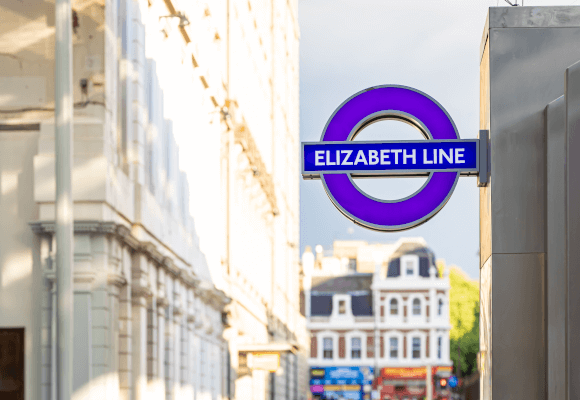The impact of the Elizabeth Line
Friday, 26 January 2024

This year marks two years of the Elizabeth line after it was opened in April 2022 amidst much fanfare. Connecting Reading in Berkshire, and Heathrow in the west, it runs through central London to Shenfield and Abbey Wood in the east, it took more than a decade to build and it bust its multi-billion pounds’ budget.
According to figures released last year, one in six journeys of the 266 million journeys taken on Britain’s transport network between October and December 2022, 62 million were on the newly opened line. Figures from the Office of Rail and Road calculated 41% of almost 370 million rail journeys were undertaken on the Elizabeth Line.
By February 2023, less than a year after opening, Transport for London (TfL) reported the Elizabeth line had carried its 100 millionth passenger whilst Tottenham Court Road was one of the line’s busiest stations.
It may have cost a small fortune - the project, which saw costs spiral to as much as £19 billion, according to the BBC, but the line, which runs for more than 100km, has been hugely successful increasing London’s rail capacity by 10%.
London TravelWatch, the capital’s statutory transport watchdog representing the interests of public transport passengers in London, referred to the Elizabeth line as ‘truly transformative’ for Londoners with more than 150 million journeys made in its first year alone as well as being in contention for the nation’s most on time railway.
Originally, Crossrail, building began on the Elizabeth line in 2008 and whilst it is expected to boost the UK economy by £42 billion, it is also responsible for increasing rents in key areas where stations along the line are located. Office rent in Shoreditch and Clerkenwell went up by 123% since the go ahead to the project was given and rents in Paddington went up by 45%.
As such a success story, it is not surprising that questions are being asked about Crossrail 2, currently on the backburner until economic conditions improve.
Running from north to south, Crossrail 2 was originally mooted in the 1970s but in its current form, it is proposed to start from Broxbourne in Hertfordshire and run south where it branches off at Wimbledon to finish at one of four Surrey destinations – Shepperton, Hampton Court, Chessington South and Epsom. Similar to the Elizabeth line, several plans have been drawn and redrawn to the point Crossrail 2 has already cost £33 billion.
The pandemic, which hit TfL’s finances hard, meant the project had to be shelved although its supporters hope it will eventually see the light of day, particularly as London’s population is expected to grow by another million by 2030 bringing it to 10 million equating to another 5 million journeys across the capital’s transport network. It is anticipated that Crossrail 2 will increase London’s rail capacity by 10%.
The project estimates the butterfly effect of Crossrail 2 will see the development of 200,000 new homes and provide 60,000 new jobs across the supply chain and a further 200,000 once completed. If the Elizabeth line is anything to go by, there could well be boosts in store for the commercial property sector as increased demand across the route is likely to translate into higher rents.
